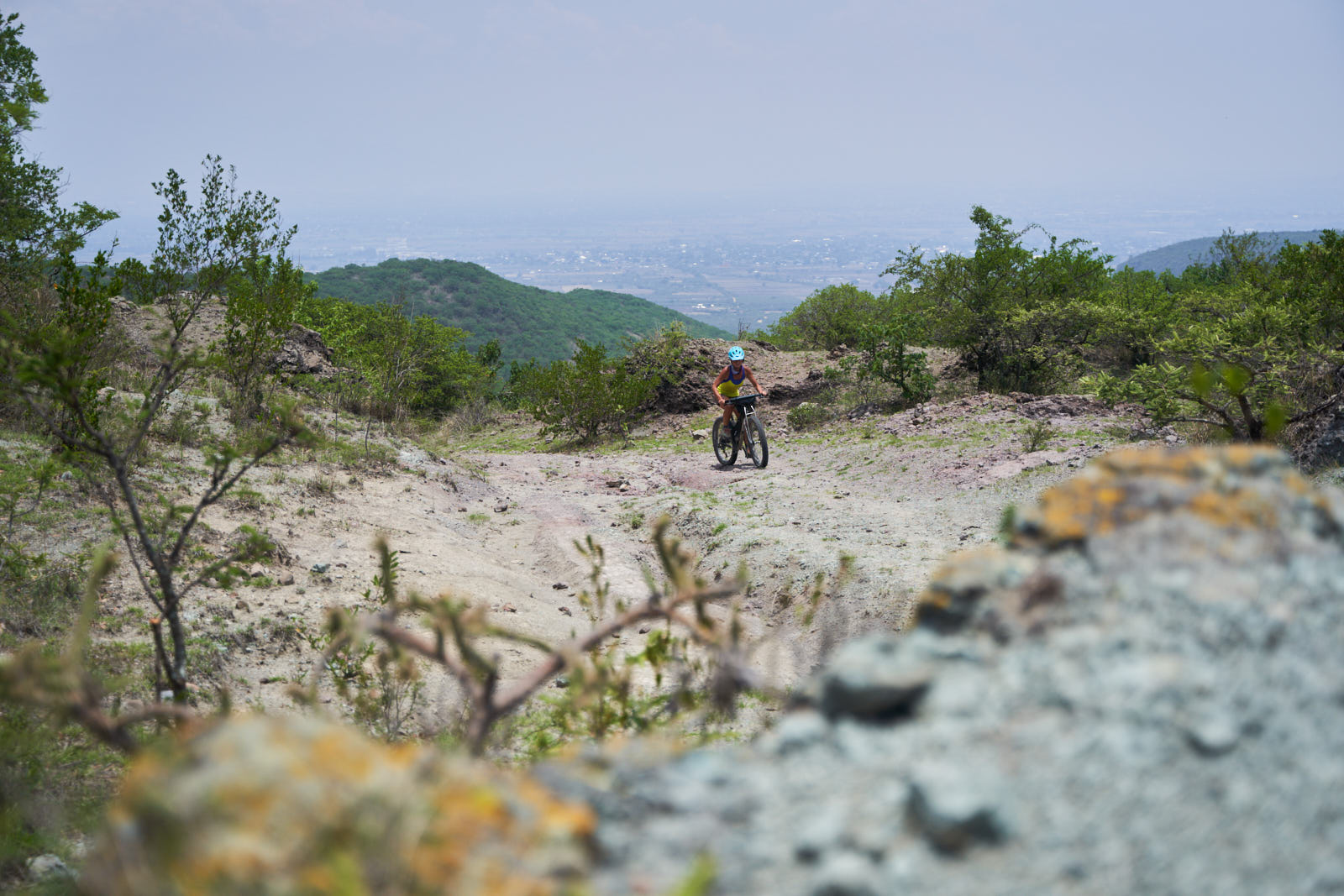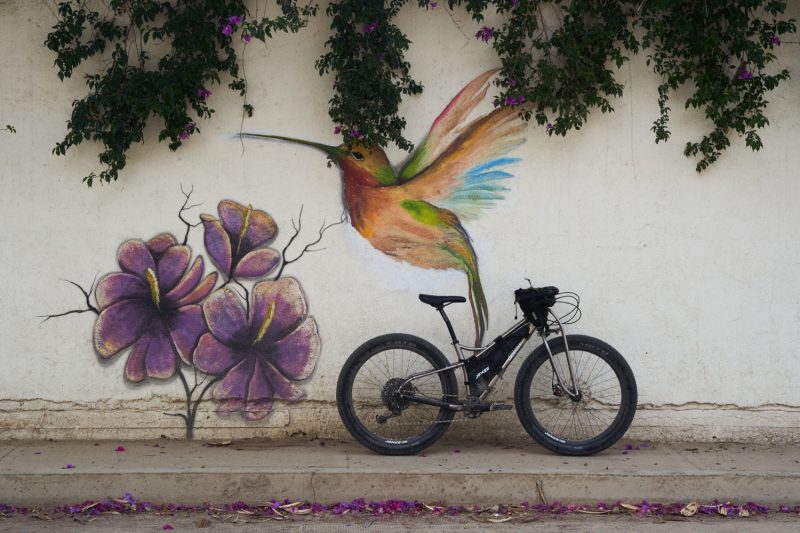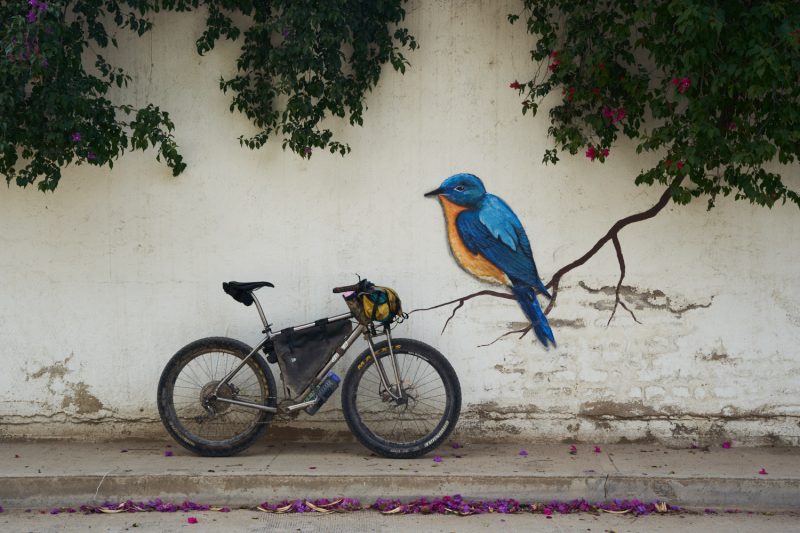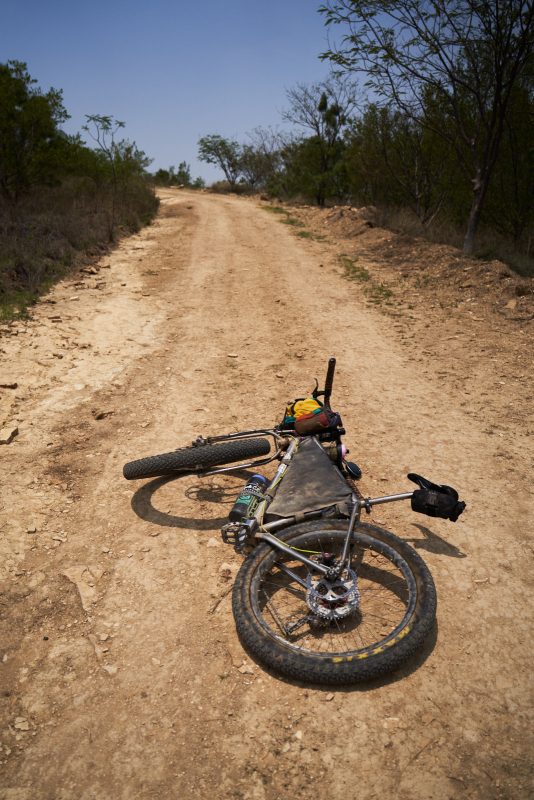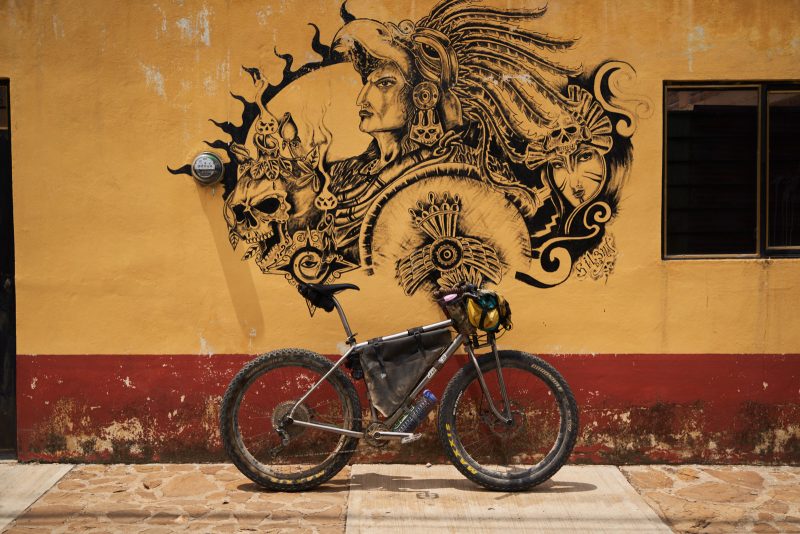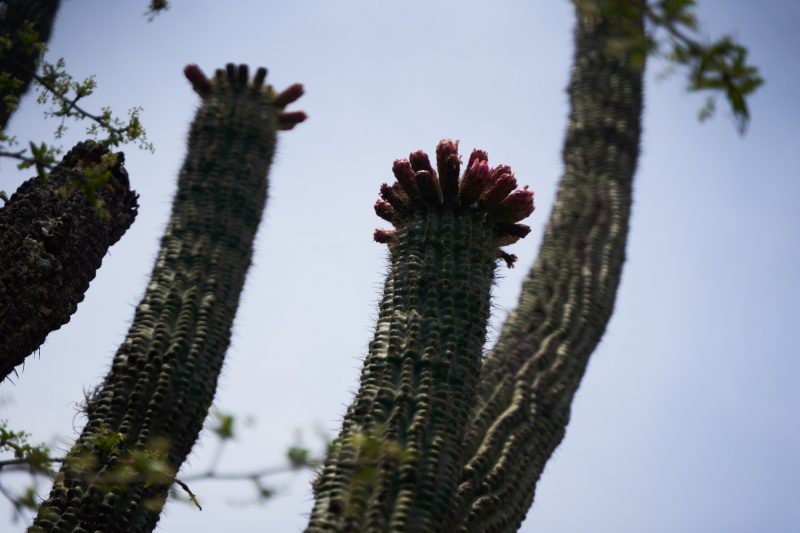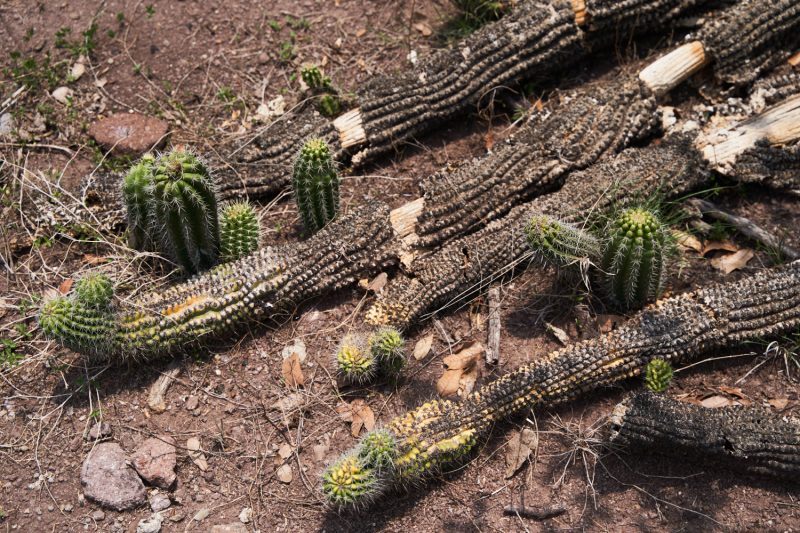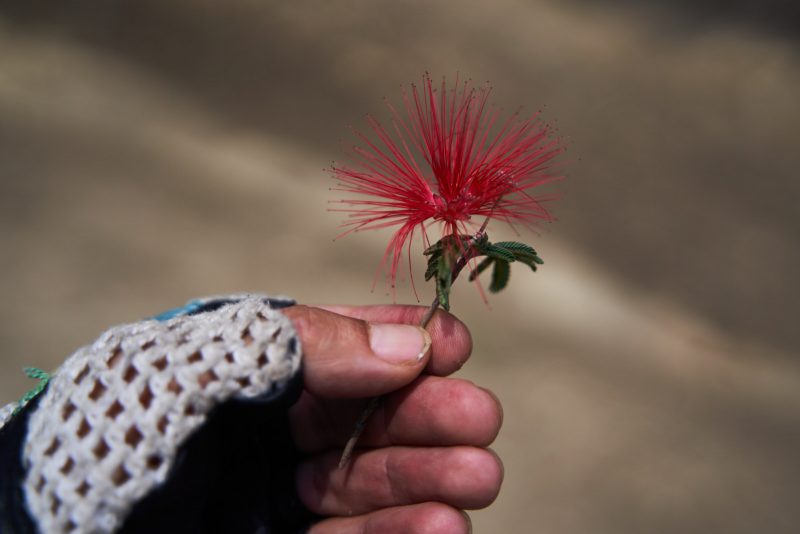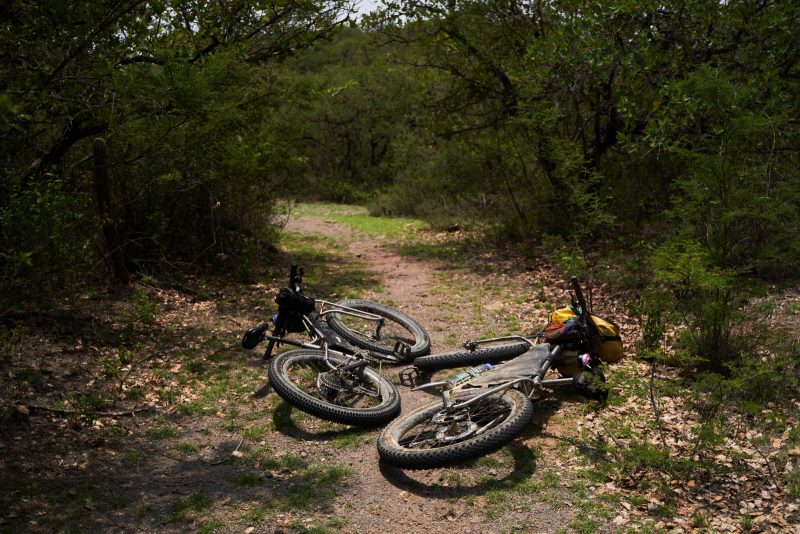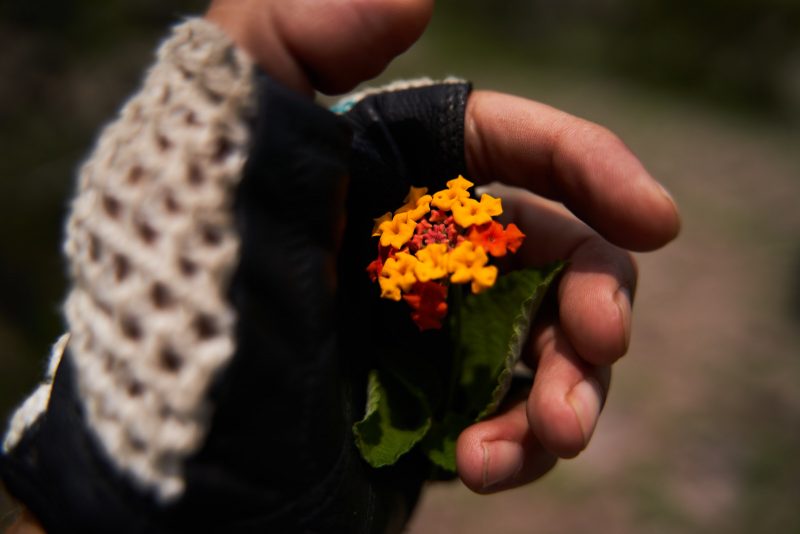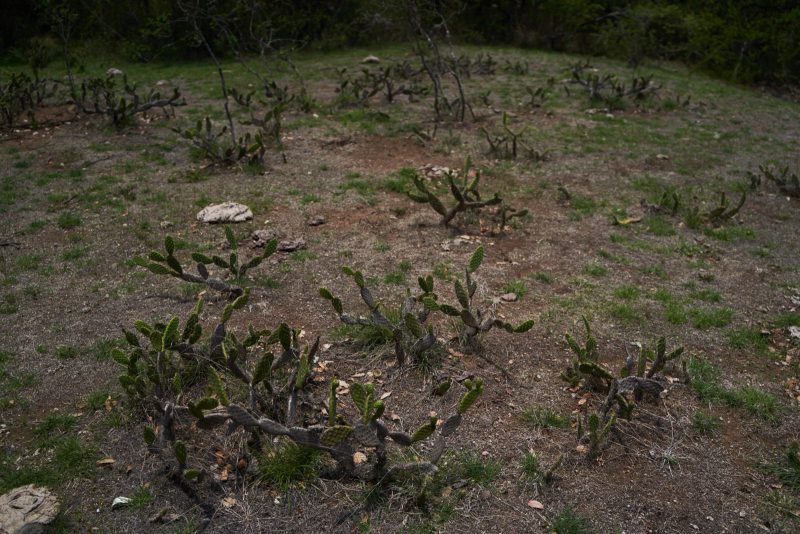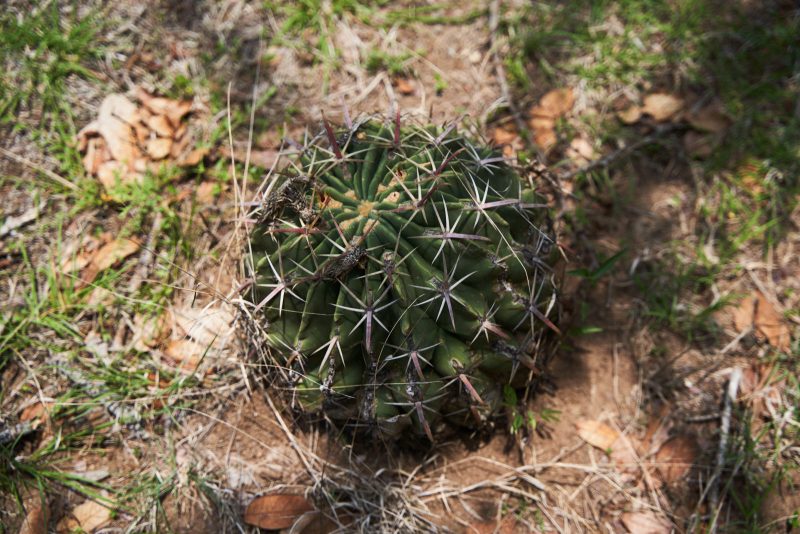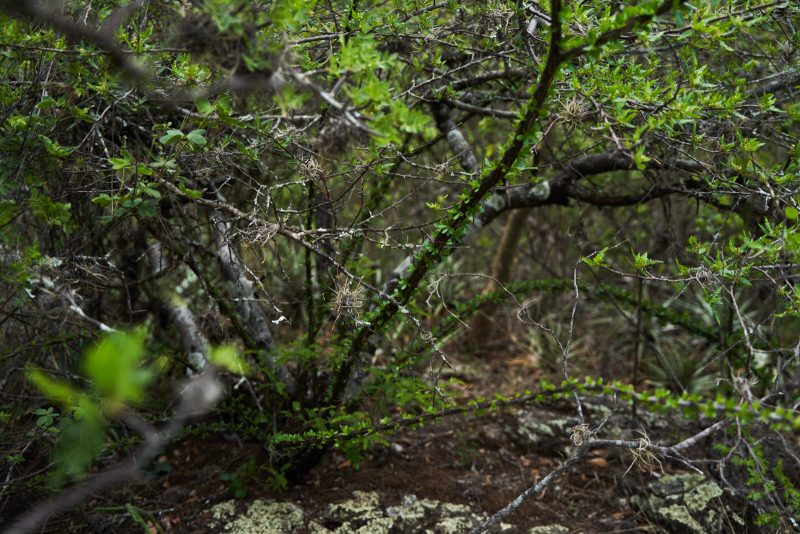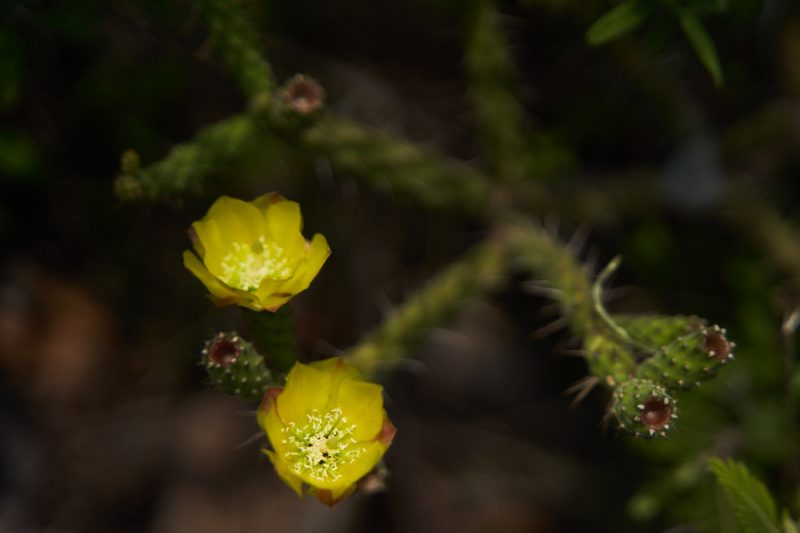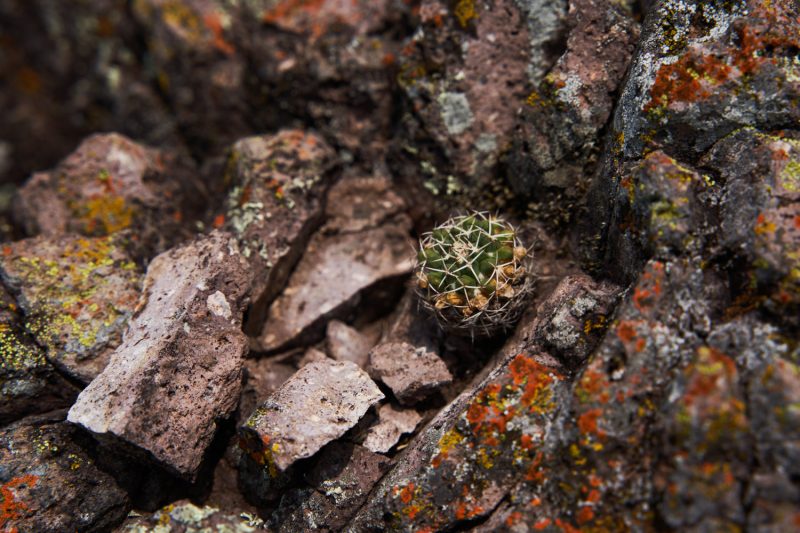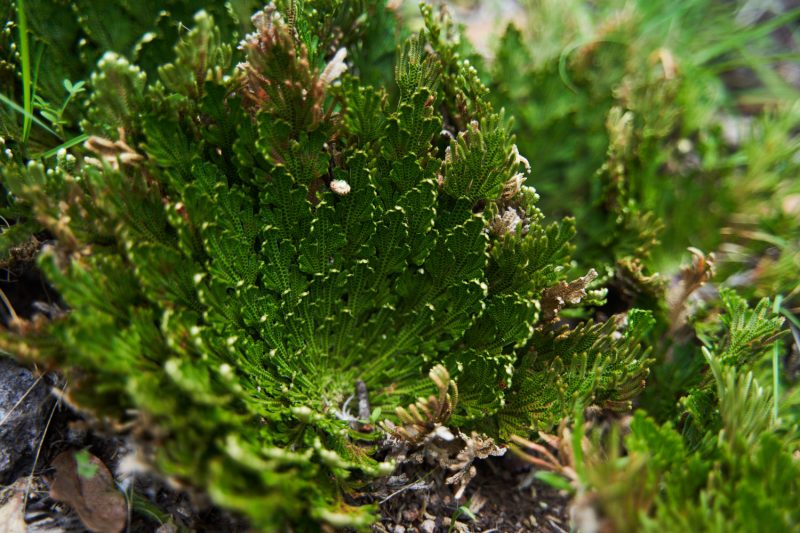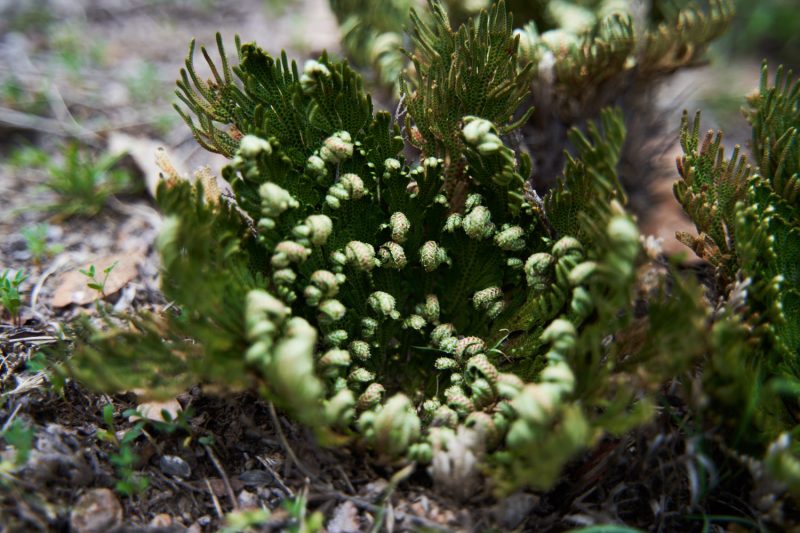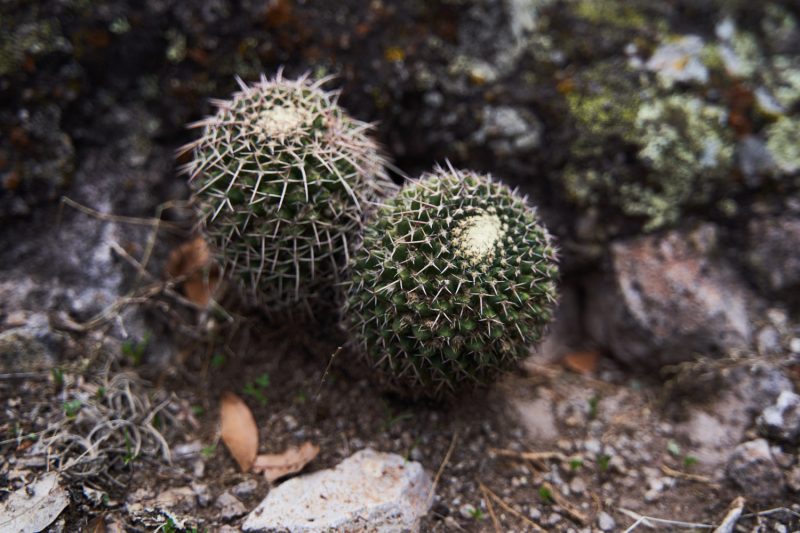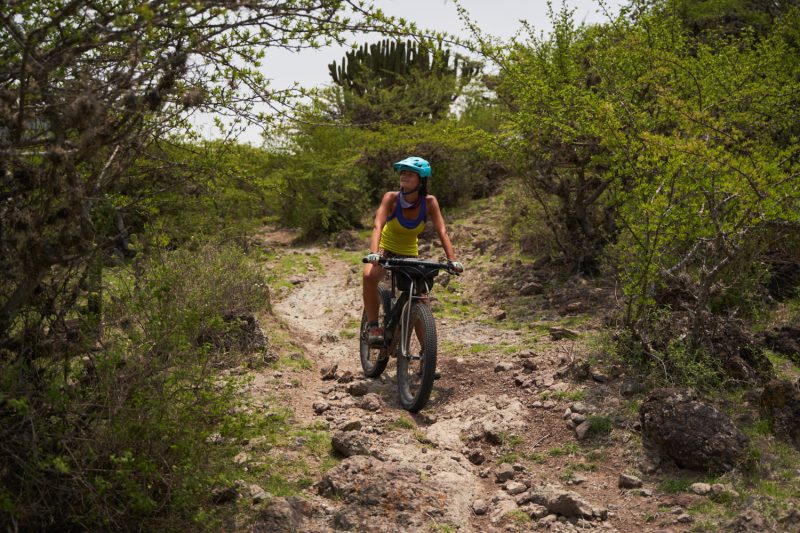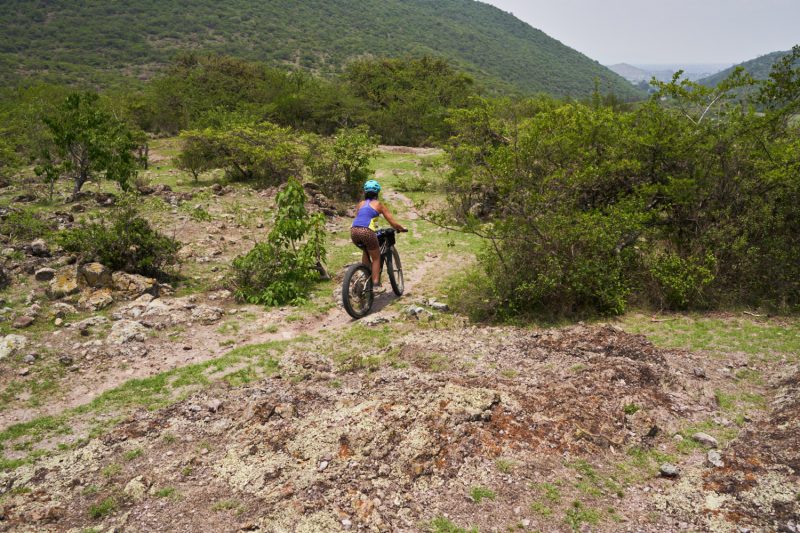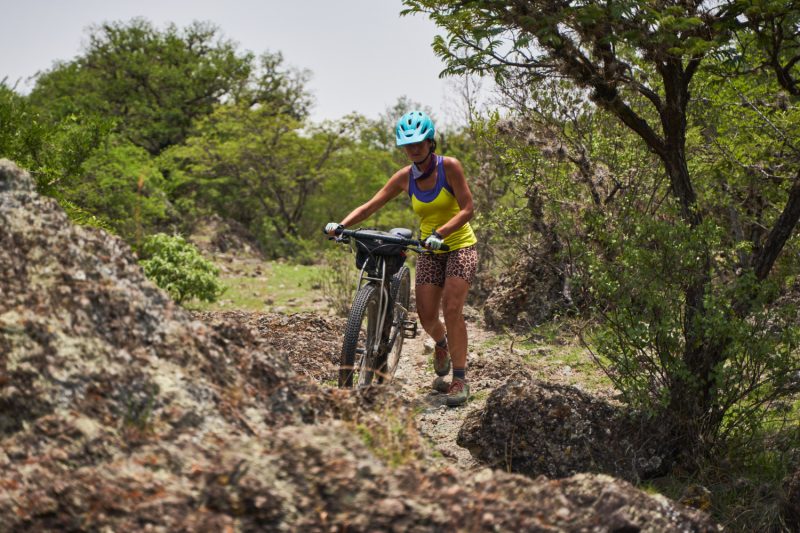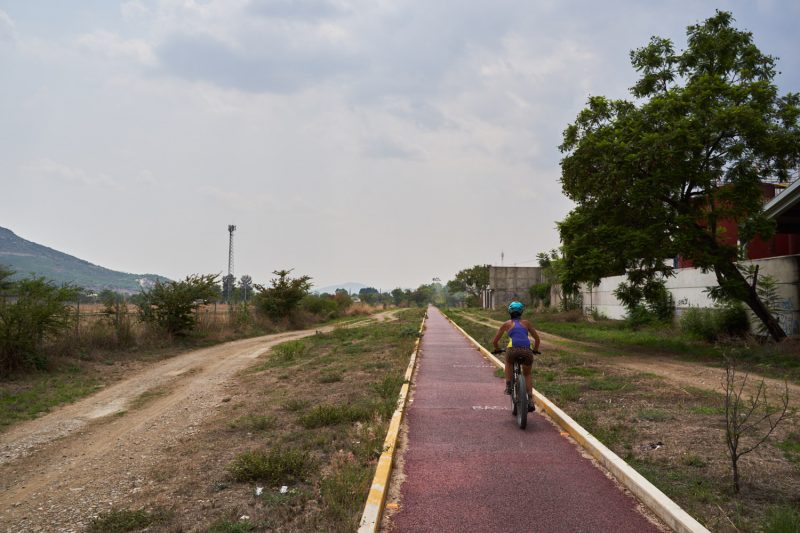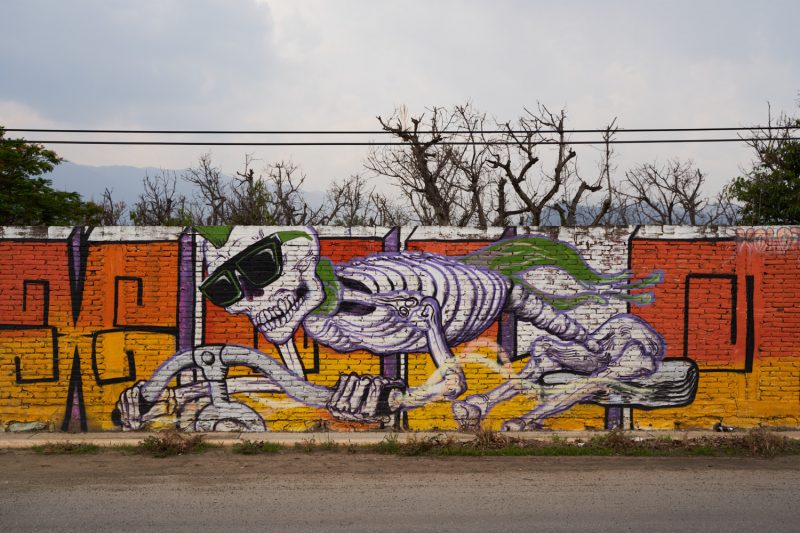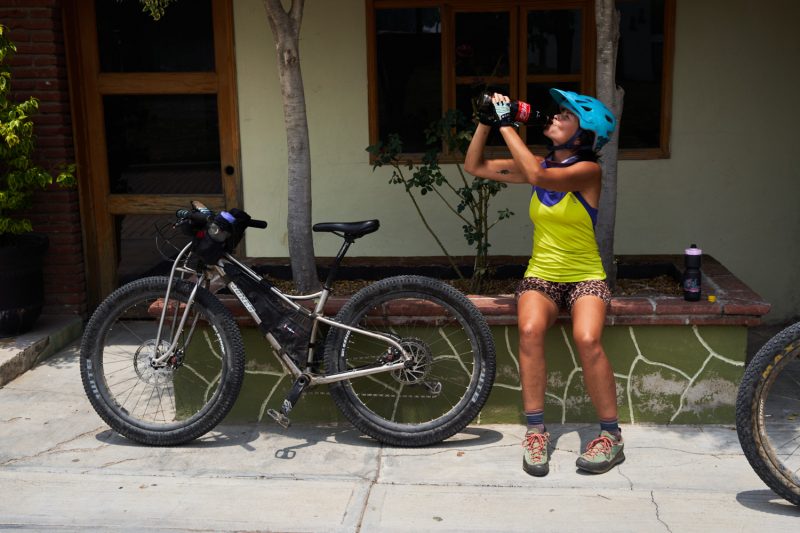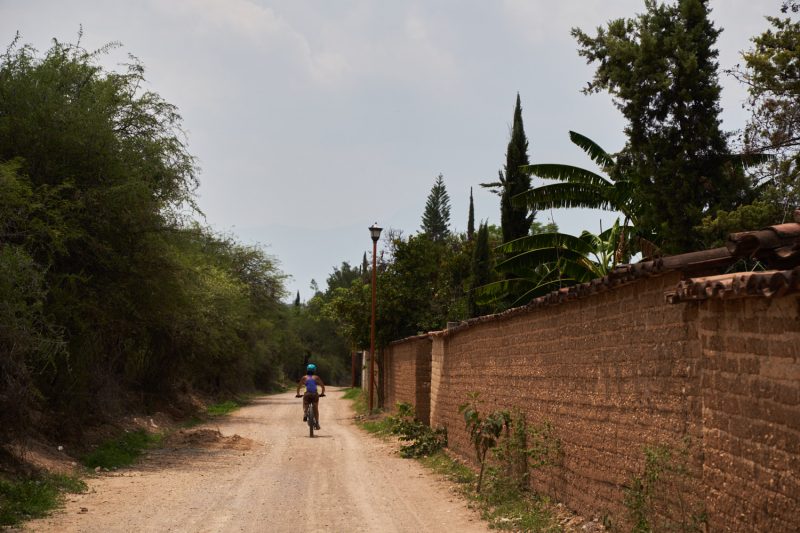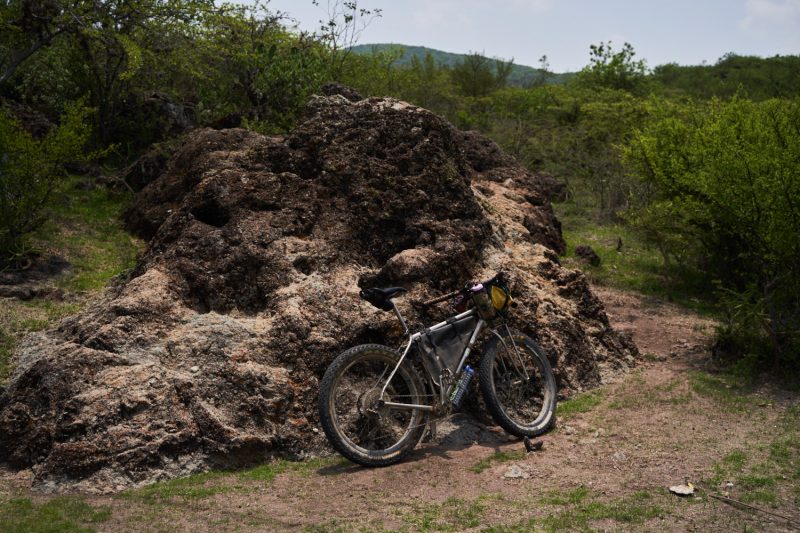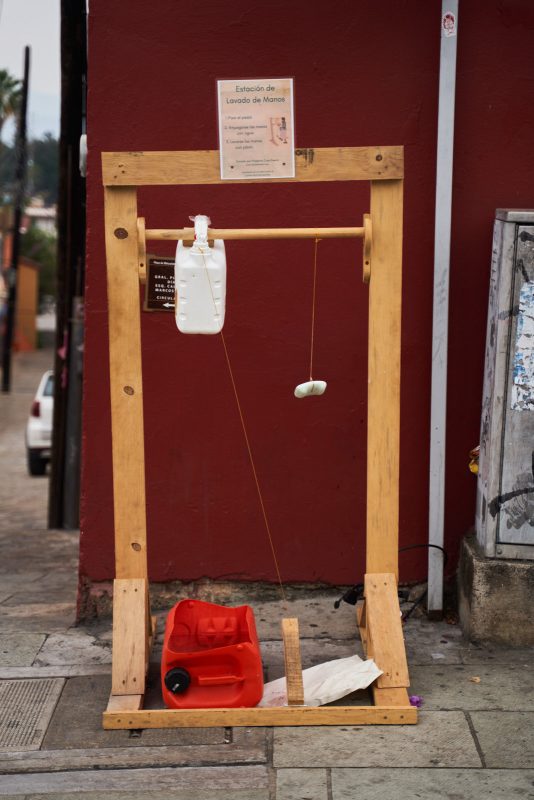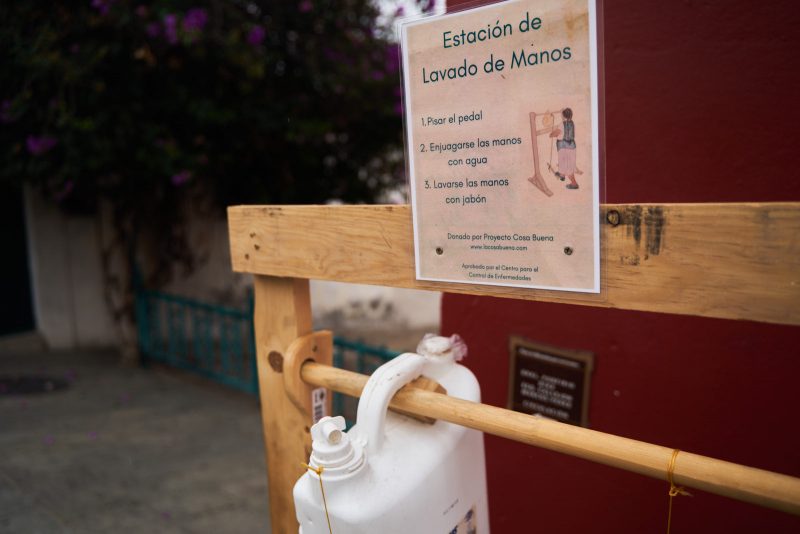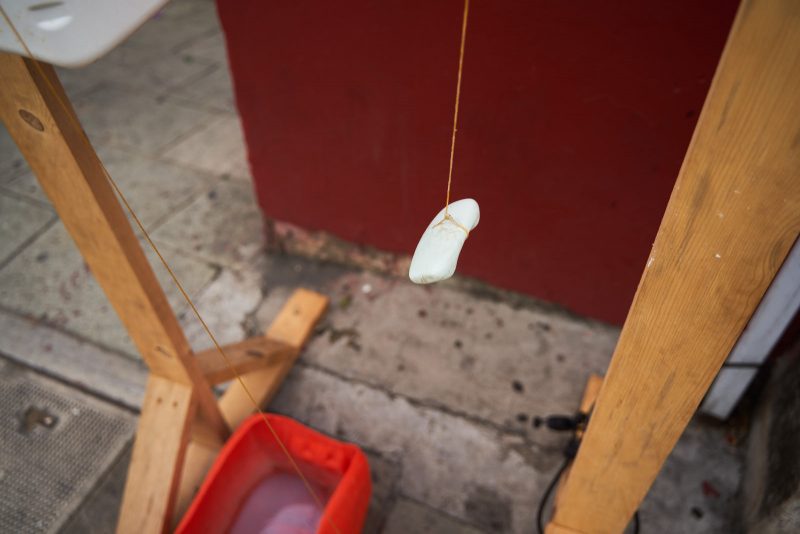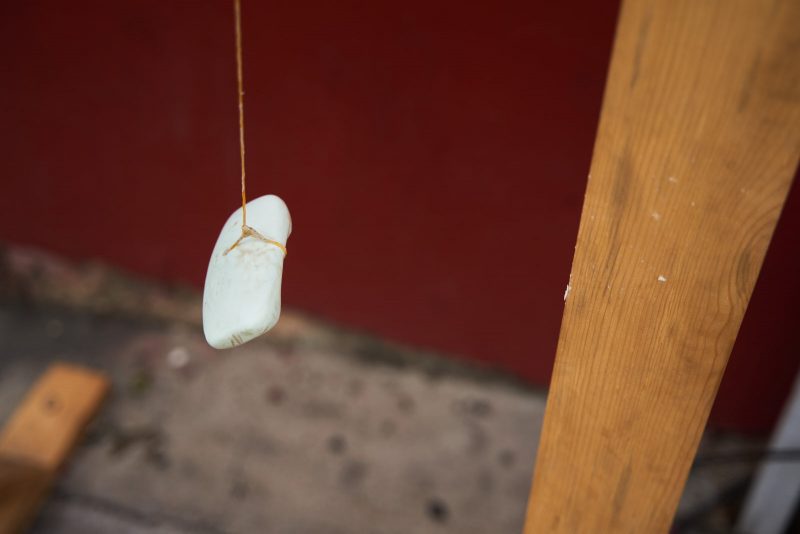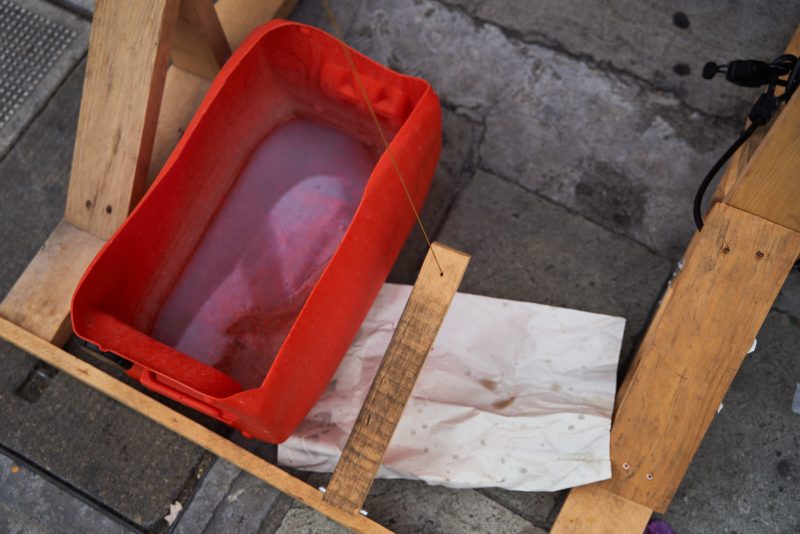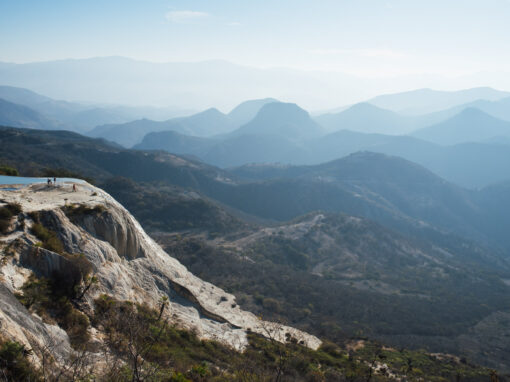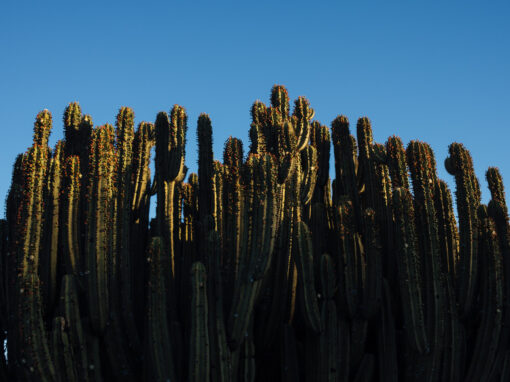Today’s ride turned out to be something of a botanical exploration, which is just as well, because Bucke is a plant-lover to her fingertips.
I rode this 50km route with Alex a couple of weeks ago. It winds its way southwards from Oaxaca Centro via a clever (but not always pretty) interplay between big city backstreets and rural dirt roads. Although the net result can feel a little scrappy in places, it does a fine job at circumventing main thoroughfares and big truck traffic. So I’m grateful for it!
What’s more, we passed a private botanical garden, with an impressive walled enclosure that provided excellent material for my ongoing ‘Bike v Oaxacan Murals’ project.
The zone south of Oaxaca is lower-lying and arider than the lush and lofty climes of the Sierra Norte. We exited the city sprawl via San Bartolo Coyotepec, a small settlement famed for its black pottery (sadly all the workshops are closed right now) before swivelling sharply to the east and working our way up and over a shallow flank of hills.

The climb was relatively short but it was exposed to summer’s unrelenting sun, which sapped our energy despite the haze and relatively low humidity. Aside from a few thorny mesquite trees that offered mottled pockets of tantalising shade, it was just us, the agaves, and the desert scrub, until the road dipped briefly into a more verdant, grassy grove where spring water flowed and bees had gathered to drink.

Pushing on, the route became increasingly rocky in nature – revealing clear evidence of volcanic activity – and it was sometimes tricky to negotiate. Then it hurdled a low pass, dividing the Zimatlan valley with that of Tlacolula. The browny-red rock was embellished with healthy-looking lichen; Bucke informed me that eastern slopes often act as a catchment area for moisture. Sure enough, the descent towards San Antonio Buenavista on the other side – more uncouth jeep track than an established road, at this point – revealed a surprisingly textured world of intricate flora, that looked almost looked artificial and manicured.
Happy to lay down our bikes and investigate the plantlife sprouting up all around us, we spotted organ cacti (parts of which were decaying into the earth and uprooting into new growth), fields of little prickly pears, and a tentacled, Arbol de Matrimonio – a very ocotillo-like plant. There were lantana shrubs from the verbena family (its clusters of orange flowers are especially fragrant when rubbed together), a few cheeky, prickly balls of Mammillaria mystax (aka globose cacti), and a plant called a Mexican bird of paradise – presumably because of the similarity between its fine red hairs and the bird’s bright plumage.
Amongst the day’s favourite finds were miniature fern-like mosses, primitive vascular plants that we’d seen on other hillsides at a similar elevation – 1800m or so. I’m looking forward to reading Oaxaca Journal by Dr Oliver Sachs – of Man Who Mistook his Wife for a Hat fame – which is about his visit to the area and his fascination with ferns! Apparently there are over 700 species in the state of Oaxaca, which is more than the entire United States. And there are over 100 species of prickly pears here too. Good news for variety… though it can make identifying them rather tricky!
Eventually, the remnants of our track dwindled into a series of freeform cantera rock trails, their greenish tinge the result of the compressed volcanic ash. It’s always nice to find oak trees and rest in their shade – here they grow crooked and small, harbouring bromeliads in their branches, as is the fashion in Oaxaca.
After passing through petite San Antonio Buenavista, where a 1.25l bottle Coca Cola was guzzled (because it was the only size available in recyclable glass), the route slipped into a mellow rural run to Tule, which is home to both icy nieves (refreshing, juiced-based treats) and an especially famous Montezuma Cypress. It’s said to be the largest tree in all of Mexico.

Tule’s plaza was closed and cordoned off to visitors, so it was impossible to capture this mighty specimen in all its splendour. But we did skirt around the back to at least admire its broad and complex trunk. It spans some 14m wide and is 42m in circumference, making it the ‘stoutest’ tree in the world. Height-wise, the most recent measurements put it at over 34m. Given the incessant soundtrack that emits from within, perhaps a thousand chirruping birds congregate in its branches.
Whilst its exact age is technically unknown, the tree is thought to have been around for around 2000 years. Woah! In fact, its extensive root system extends far under the main road, though sadly groundwater pollution is said to be the cause of its slow decline.
Fans of the celebrated botanist-explorer Alexander von Humbolt may be interested to know that he made a special journey to Tule in 1803, having heard about the tree’s impressive stature.
From Tule, it was a quick ride back to the city, on a bike path that beelined straight into downtown Oaxaca. We shared it with a few cyclists, several of whom were wearing masks, like us. Mexicans are a gregarious people by nature and it’s taken some time for masks and social distancing to become the norm here. Even if numbers remain relatively low in this state, COVID-19 is still on the rise…
All in all, this is a lovely, relatively mellow ride with just one significant climb to its name. Wiggling out of the city feels like a time-consuming process but at least the escape is unconventional. And once you’re beyond San Bartolo Coyotepec, peace prevails in the hills.
As far as the quality of terrain goes, I’d consider this a roughstuff gravel route, though the tricky singletrack descent does nudge it into mountain biking territory. Still, you’ll rip along happily enough on any bike with 2in tyres. Much skinnier and you’ll likely have to take it easy in a few places.
On the way back to the hostel, I spotted this portable, foot-operated washing station, donated by Cosa Buena; their website has some beautiful photos. The same stations can be seen at the entrance to the local market, where everyone’s temperature is taken.
A gpx track can be downloaded via the Ride With GPS map below. And thanks to Bucke for the deep dive into Oaxaca’s biodiversity! If the famous Jardín Etnobotánico de Oaxaca had been open, it would have been great to end the ride with an afternoon visit.
